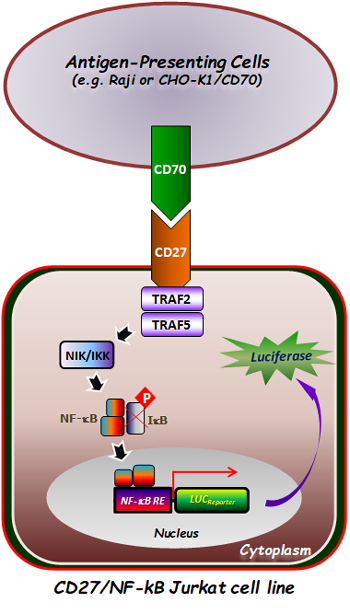PE Conjugated Anti-ZAP-70 Monoclonal Antibody (Clone:1E7.2)(Discontinued)

Figure 1: Intracellular staining of human peripheral blood lymphocytes with anti-ZAP70 (1E7.2) PE.
Roll over image to zoom in
Shipping Info:
For estimated delivery dates, please contact us at [email protected]
| Amount : | 100 tests |
| Isotype : | Mouse IgG1 |
| Storage condition : | Store in the dark at 2-8°C. Do not freeze. Avoid prolonged exposure to light. |
The ZAP-70 (zeta-associated protein of 70 kDa) tyrosine kinase was identified as a tyrosine phosphoprotein that associates with TCR zeta subunit and undergoes tyrosine phosphorylation following TCR stimulation. ZAP-70 is a Syk family tyrosine kinase primarily expressed in T and NK cells that plays an essential role in signaling through the TCR. TCR-mediated activation of T cells is crucial to the immune response. In humans, ZAP-70 gene mutations resulting in lower ZAP-70 protein expression levels or expression of catalytically inactive ZAP-70 proteins, have been identified. ZAP-70 deficiency results in the absence of mature CD8+ T cells and the prevention of TCR-mediated activation of CD4+ T cells, and it can lead to severe combined immunodeficiency.In patients with chronic lymphocytic leukemia (B-CLL), ZAP-70 expression on B cell was shown to be correlated with disease progression and survival. ZAP-70 contains two N-terminal SH2 domains (Src homology domain 2) and a C-terminal kinase domain. During T cell activation, the binding of ZAP-70 SH2 domains to the phosphorylated zeta subunit on the activated TCR complex causes a colocalization with the Lck tyrosine kinase that phosphorylates ZAP-70 on Tyr493 in the activation loop. ZAP-70 autophosphorylates multiple tyrosines in the region between the SH2 domains and the kinase domain, including the binding sites for additional SH2-containing signaling proteins such as SLP76, LAT, Lck, PLCgamma1, Vav, Shc, Ras-GAP, and Abl. ZAP-70-mediated activation of these downstream effectors leads to the release of intracellular calcium stores, and the transcription of interleukin-2 and other genes important for an immune response.
| Subcellular location: | Cytoplasm, Cell membrane |
| Post transnational modification: | Ubiquitinated in response to T cell activation. Deubiquitinated by OTUD7B. |
| Tissue Specificity: | Expressed in T- and natural killer cells. Also present in early thymocytes and pro/pre B-cells. |
| BioGrid: | 113367. 52 interactions. |
|
There are currently no product reviews
|












.png)











